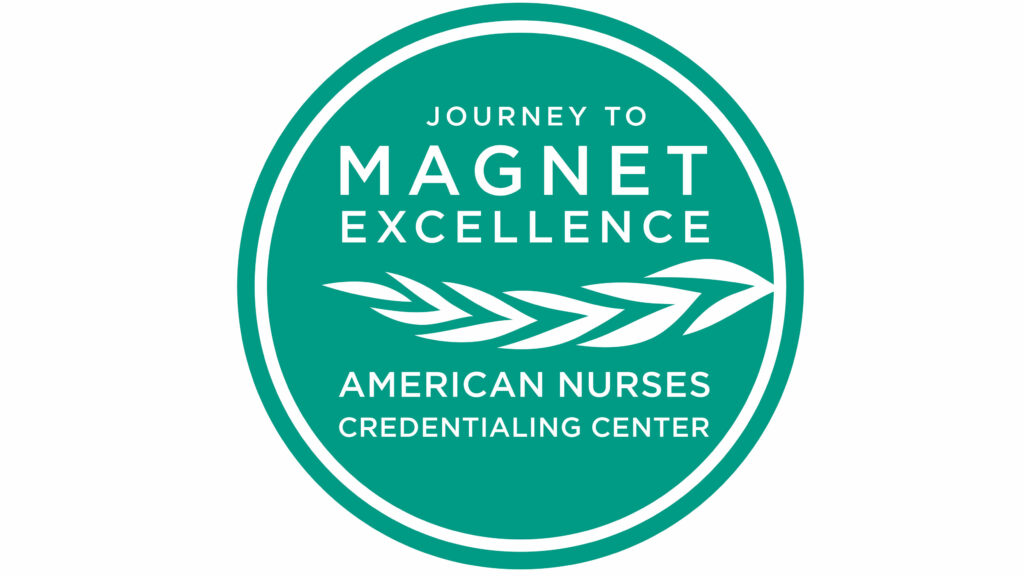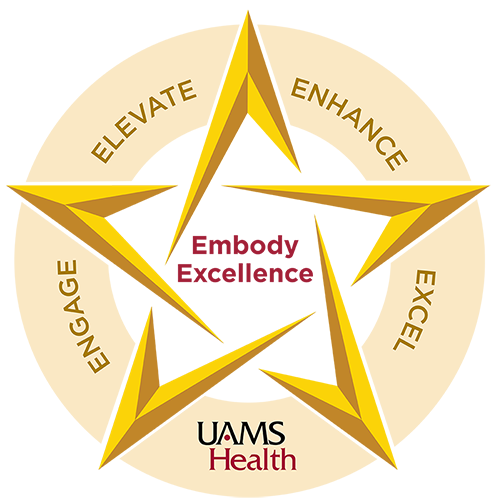This week the campus released the public signs, indicating our successful Magnet designation. It includes large signs posted throughout the hospital, in addition to signs around the outside of campus and a very large banner that will hang on the side of the building outside the discharge area (coming soon!) We want the whole world to know that Nursing Excellence is alive and well at UAMS and recognized by the ANCC worthy of Magnet designation!
Magnet designation, public recognition, kudos and certificates are wonderful, but we must remain vigilant in our determination to keep the principles of nursing excellence at the forefront of everything we do.
You might remember that there are 4 pillars of nursing excellence: Transformational Leadership, Structural Empowerment, Exemplary Professional Practice, and New Knowledge & Innovation. Of those Exemplary Professional Practice (EPP) is the largest domain with the most required narratives. It’s also my favorite; what nurse doesn’t want it said of them, “they have exemplary nursing practice?” This domain is chalked full of the nuts and bolts of nursing leadership and practice. Some of the elements include:
- Evidence-based practices changes led by nurses
- Use of shared decision-making
- Clinical expert-driven patient care
- Coordination of care to improve patient outcomes
- Interprofessional collaboration in patient plan of care
- Nurse-led quality improvement initiatives
- Nurses practicing to the full extent of their scope of practice
- Nurse-led patient safety initiatives
EPP is also the domain where we are required to demonstrate quality outcome data. Quality outcomes are a reflection of how exemplary our practice is and we track many nursing-sensitive quality metrics for our patients: Falls, CLABSI, CAUTI, CDIFF, MRSA, Surgical Errors, Patient Burns, Door to Needle times, Door to Balloon times, HAPIs, device-related pressure injuries and many others. To say these outcomes are nurse-sensitive means that, you as a direct care nurse, have a major impact on the prevention or occurrence of these patient outcomes. We are not singularly responsible, but our practice has a major contribution to these outcomes. Sometimes we can get caught up in initiatives, supplies, equipment, new technology, and cutting-edge practice, but we forget about the basics of nursing care.
For example, let’s take a look at the basics of care that prevent CLASBIs:
- Hand-Hygiene
- Wearing gloves when accessing IV lines
- Scrubbing the hub prior to accessing IV lines
- Hand-Hygiene
- Utilization of Curos caps on ports
- Monitoring dressing integrity
- Hand-Hygiene
- Sterile technique with dressing changes
- Did I mention Hand-Hygiene?
Exemplary professional nursing practice is built on the basic components of patient care and we can’t lose sight of those simple, basic approaches in achieving great patient outcomes.
Speaking of Hand Hygiene, our quality department is almost ready to launch Hand Hygiene 2.0. This will include a relaunch of education, signage, hand hygiene coaches and more to build a culture that supports excellence through peer accountability for hand washing. The simple step of handwashing is foundational to many of the nurse-sensitive quality metrics that we track, and I’m looking forward to seeing the exemplary professional nursing practice through this initiative.
I’m sure it will make a great Magnet story.



